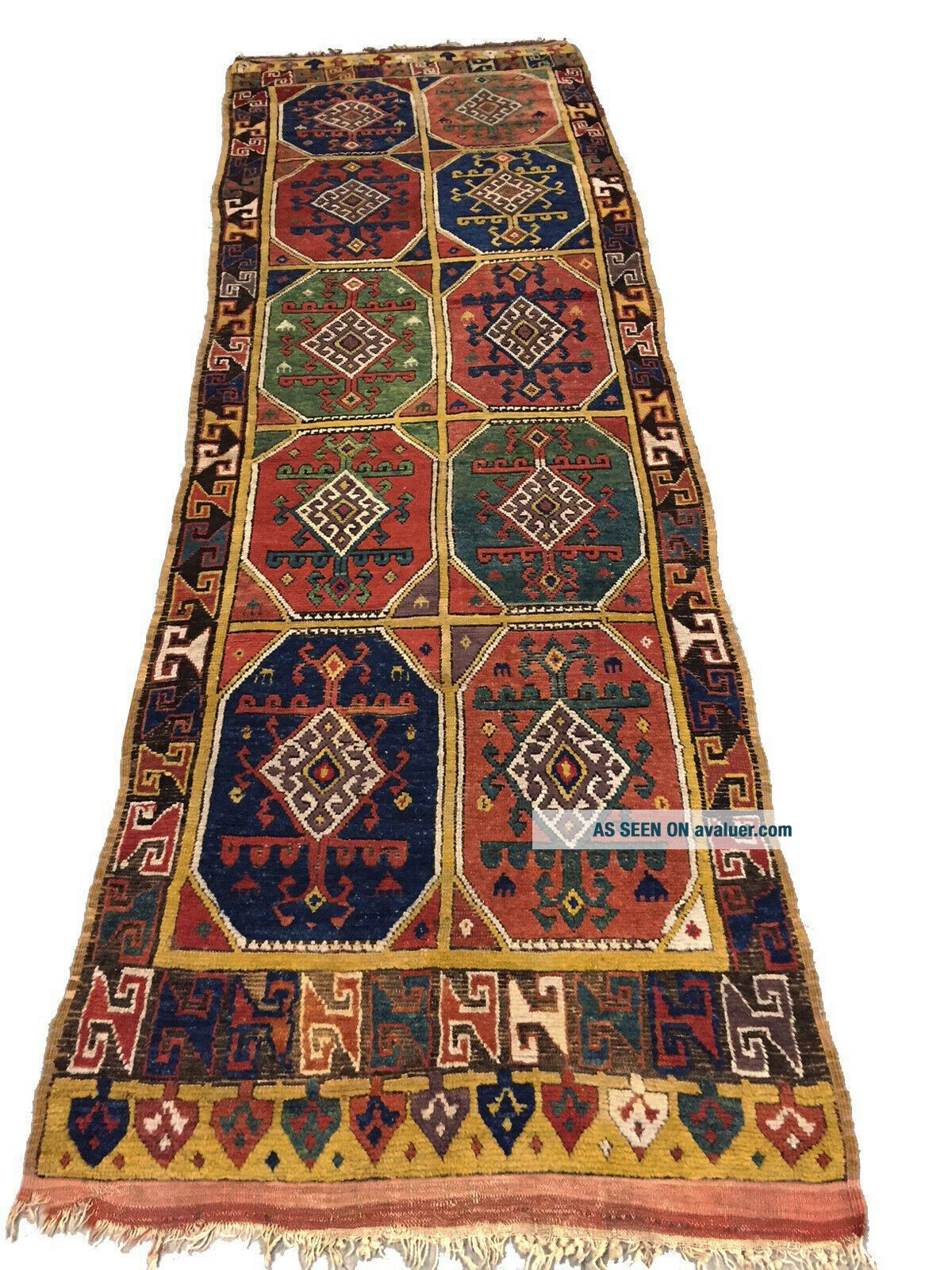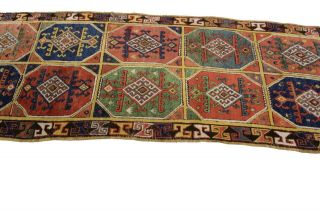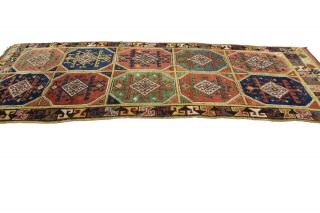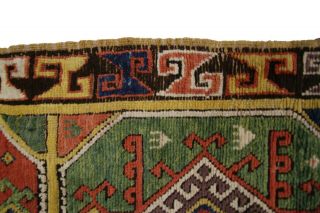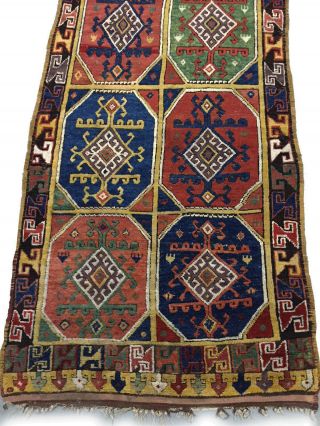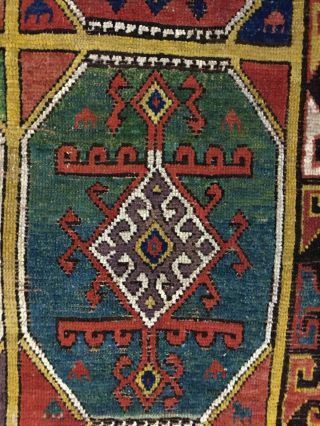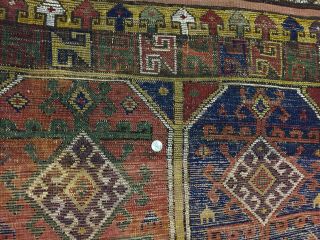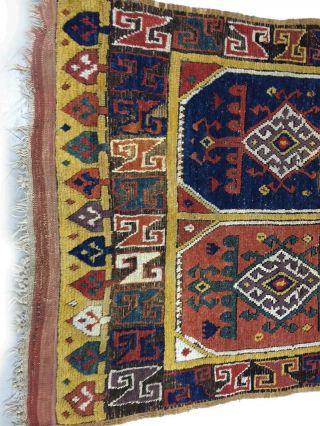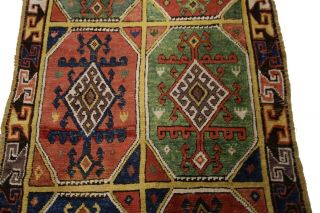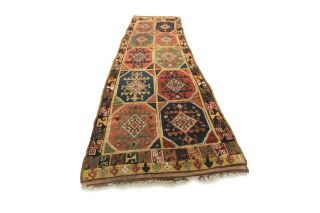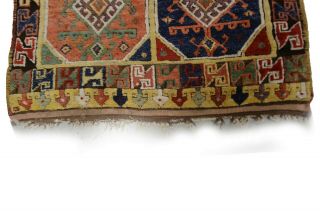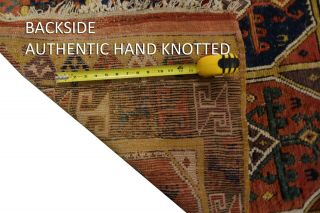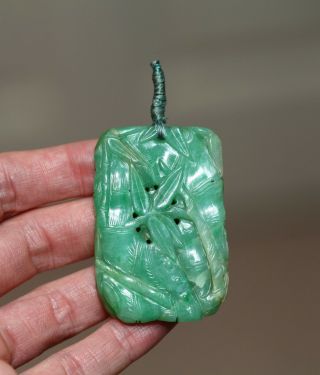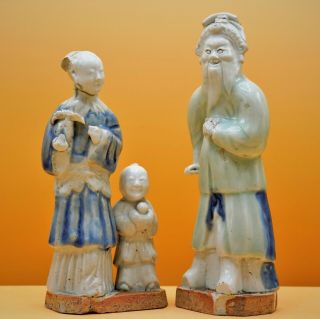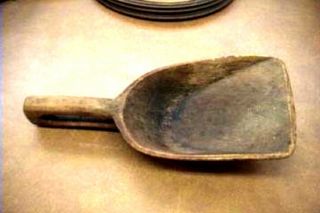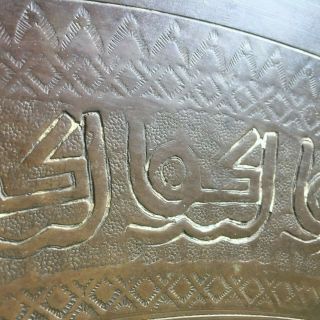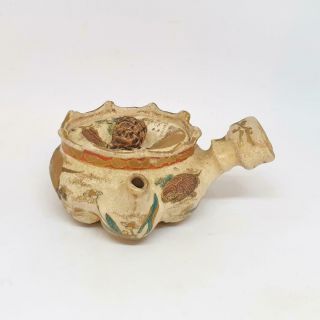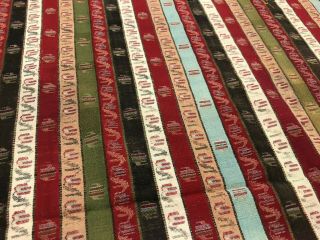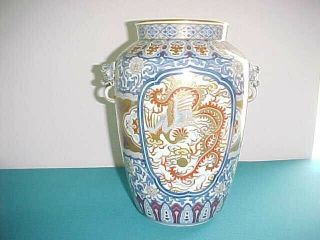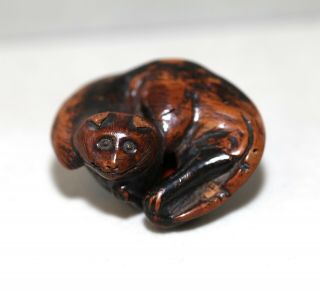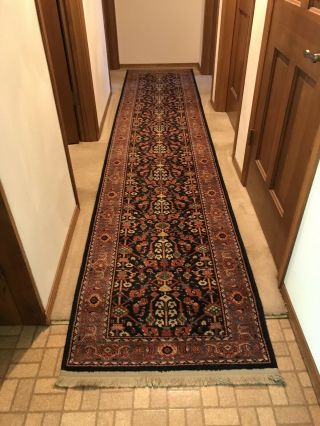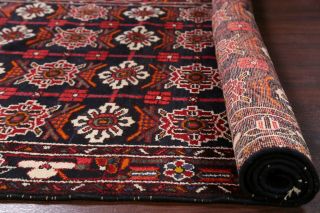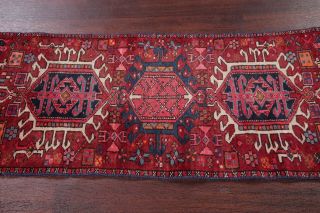18th Century Museum Rare Antique Collector Konya Rug Turkey 4 ' X11 ' 109cmx325cm
Item History & Price
109cm x 325cm
Circa 1760
"This is an exquisite authentic Rare Collector antique Turkish Konya Rug from 18th century . Amazing design and outstanding quality Wool on Wool foundation - MUSEUM QUALITY COLLECTOR PIECE!"-DCR
Free international shipping on this rug!
from Wikipedia:
In 1292, MarcoPolo was the first to make mention ofthe Konya car...pets in writing when he called them the most beautiful inthe world.[1][2] Konya carpets are named for the region inwhich they were made. Renamed from the Greek “Iconium” when the Seljuk Sultans of Rum made it their capital, Konya isone of the largest, oldest and continuously occupied cities in AsiaMinor.[2] When Polo wrote of the Konyas, he hadprobably seen them in manufactories that were attached to the Seljuk courts.[1] In the early 20th century, large carpetswere found in the Alaadin Mosque in Konya; they are now housed in the Museum ofTurkish and Islamic Arts in Istanbul.[1] Scholars and collectors alike, primarilyfor their bold tribal designs and magnificent color combinations not to mentiontheir rarity, covet Konya rugs. Konya rugs being made today includethose coming from surrounding regions: Dauac, Kesimuslu, Karapinan, Obruk and Taspinar.[1] All of these regions are included in "GreaterKonya", although distinctions can be made between types. Nomadic rugs falling under the Konya region are also knownas Yörüks. In a sense Konyas are the Turkish counterparts toCaucasian Kazakhs, though they are generally older and far rarer, and are noless sought after by collectors Konya rugs are prized fortheir luxurious wool, which comes from the rural areas surroundingthe city. The wool from these regions is known to be some of the richestworldwide Older pieces arecharacterized by the restraint towards color combinations and their use ofearth tones (most notably: soft yellow, terracotta and browns). The wefts ofthe Konya rugs are always red, distinguishing them from other Persian carpets.The Nomadic pieces within this genre usually have a foundation of dark wool orgoat hair Incorporated within Konyacarpets are hexagonal and basic figures. These patterns are tribal motifs. Geometries are either arranged in neat rows or staggered throughoutthe field. A common geometric motif is the "Memling gul", a geometric medallion patternedthroughout the carpet.[citation needed] These rugs also feature a fairly loose knotting technique.
Similar pieces have brought high numbers in Sothebys and Christies:
SOLD FROM SOTHEBYS LONDON:
23 APRIL 2018 | 2:30 PM BST
RUGS AND CARPETS: INCLUDING DISTINGUISHED COLLECTIONS
A Konya Prayer rug, Central Anatolia
approximately 123 by 100cm; 4ft X 3ft. 3in.early 19th century
LOT SOLD FOR 17, 500 GBP
NEW ~FREE Consultation with RUG EXPERT!~
Description:
This genuine hand knotted Antique Authentic Konya Rug by Designers Choice Rugs is a true beauty. With its geometric character, this rug portrays an exquisite opulence.
The creation of this rug involves many processes, including spinning, weaving, washing, trimming, and finishing, all of which requires skilled weavers. Known for its unique quality, this one of a kind rug displays a true magnificence.
Size3'7" x 10'8"Serial ID #10903kDesignKonyaOriginTurkeyAgeCirca 1760CategoryAntiquePatternRare Geometric Animals and BirdsMaterial100% Hand knotted woolFoundation MaterialWoolColorLight Blue, Navy Blue, Black, Ivory, Red, Rust, Yellow, Beige, Green, Salmon, BrownQuality Superb, Rare ItemConditionSuperb Condition for an 18th. Century Rug Minute Low Areas Due to Oxidization, Uneven Fringe, Rare museum pieceRetail Price$22, 000Our Price$11, 750
History of Konya
The early permanent settlements in Konya and its province go back to prehistoric times. So many findings of the cultures of the Paleolithic, Neolithic, Kalkolithic, Early Copper and Bronze Age were discovered within the period of time in the province of Konya. Konya has been an old permanent settlemet province, a cradle for many civilizations since people started to run a settled life in 7000 B.C. As we remember the usage of writing began 3500 B.C, Konya is considered one of the oldest settlements of the world history. Catalhoyuk, located within the province of Konya, is known as a centre of the first cultivation made in the world history, common defence made against wild animals, first fire were discovered, the first permanent settlement were made, the first food culture began. Konya has always been in the centre of civilization. Hittite and Lycian 6th century B.C.; Persian 4th century B.C; Alaxander the Great, Selevkos, Bergama Kingdom 2nd century B.C. and the Romans in 395 A.C. had ruled the city of Konya and its province. Sasanies at the beginning of the 7thcentury, Amawiys at the middle of the same century with the commander of Muawiyah temporarily occupied Konya. Konya was a predominant Byzantine province till 10th century; the penetration of Islam into Anatolia brought the Arabian attacks. First Turk raiders those who came to Konya before Malazgirt Victory (1069) were Seljuk Turks. The Great Seljuk Sultan Alparslan opened the gate of Anatolia for Turks in 1071. The Sultan Alparslan after the victory ordered his commanders to invade Anatolia wholly. Konya was conquered by Kutlmısoglu Suleyman Shah. After that he faced towards the west conquered Iznik and preferred it to be a center of the Anatolia Seljuk Empire which was established in 1074. Following the conquest of Iznik the period of Turk-Islam began. Thus Anatolia Seljuk State was established in 1074 and its capital city was Iznik. During the first crusade in 1097 Iznik was lost the capital city was moved to Konya. Thus a new page began in its history, Konya was developed day by day decorated by variety of architectures and it became one of the most frourishing cities in Anatolia in a short time. Despite German Empire F. Barbarossa sieged Konya (18th of May 1190) during the thirt crusade he could not invade the castle which was defended by sedond Kılıcarslan. Eventually he had to leave. Konya remained as a capital city until the end of the Seljuk Empire (1308). Later it was ruled by Karamanogulları as the biggest city of Karamanogulları State. Konya was included into the border of the Ottoman Empire (1467) and now it is growing larger and developing rapidly on its way as one of the biggest and important city of the Republic of Turkey conveying its enormous heritages to the future generation. ÇATALHÖYÜK It is located in the boarder of Çumra district in the place of Küçükköy. One of the most important archaeological field, Çatalhöyük’s past goes back to 7000-8000 B.C. years. Archaeological excavations which were begun by James Mellaart in 1961 and it was stopped in 1963, later it was re-began its studies by Prof. Ion Hodder. So many valuable excavation findings included goddess Kibele statue are displayed in the Konya Archeolgy Museum. Besides this archaeological excavation works are still continuing. KILISTRA It is an archaic city located southwest of Konya in the village of Gökyurt; as if Kilistra is a small Kapadokya. It is on the famous King’s Road. St. Paulos, whose name is mentioned in the Bible, is believed to have stopped by on his journey. At the west of Kilistra which was located on an archaic city, there are chapels bored in the rocks, water reservoir and vinestored in the Söğütlüdere. Morever, at the west of the village there are valleys lay down to the mountains full of beauties as beautiful as Peribacaları. EFLATUN PINARI (PURPLE SPRİNG) It is located 22 kms from the town of Beyşehir, established during the period of Hittite 12th century B.C. one of the most important monuments after Hattushas. There is a holy pool 40 metres in high and 30 metres in wide in front of the monument. This monument symbolizes the gods who carry the sky and connect the sky with the earth and there is some figures that are depicting gods of the storm, the sun, the mountain and the spring of the multi-gods Hittite. THE FASILLAR MONUMENT The Fasillar monument, located 18 kms East of the city Beyşehir, is one of the largest rock monuments in the world. At he same time the fasillar monument is located in a village where the city of Misthia ramshackles of the period of Byzantine are located too depicts the Great God between two lions in a mountainous temple. IVRIZ ROCK MONUMENT Ivriz is located in the border of the district Ereğli of Konya. This monument belongs to Tuvana Kingdom established about 2000 B.C. and the Relief God that was sculptured on a rock in the water spring has a fascinating beauty. Ivriz, which fascinats people by its naturel beauty and serves with its spring waters as a resort is well worth seeing. KUBADABAT PALACE The famous Seljuk Sultan Alaaddin Keykubat constructed Kubadabat Palace where is located on the west coast of the Beyşehir Lake and on the north side of the district Gölyaka. Architect of the palace was Sadettin Köpek who was a hunting commander in that time. The best of the Seljuk tiles art which was decorated on the wall of the palace contains doble headed eagle owl depicting prosperity of Seljuks, female and male eagle, stork, peacock, eagle figures etc. were portrayed. Archeological axcavations still are made and the tile arts findigns are displayed in Karatay Museum Konya.
Free international shipping on this rug!
FREE SHIPPING AND HANDLING TO ANYWHERE IN THE USAWe want you to treasure your purchase!RETURNS ACCEPTED WITH OUR APPROVAL WITHIN 14 DAYS OF RECEIVING THE RUGFeel free to message us with further questions. We are happy to help!
About Us
We are proud to be an established 5th Generation Family Business. Our ancestors have been known for being reputable entrepreneurs throughout the world in places like Europe, Asia, and the United States. We've had expertise in the Rug Industry in the USA for more than 40 years. We have had many locations across the U.S. including New York, New Jersey, Minnesota, Tennessee, and Missouri. Our main goal is to achieve customer satisfaction. We want our clients to love their purchase as well as our service. We love communicating with you regarding any questions or comments!
If you are looking for a specific color, size, or Rug Type, Please feel free to send us an inquiry and we will do our best to find you the perfect match!
Please contact us for special rates for international shipping!



